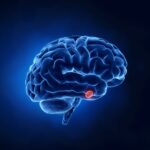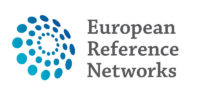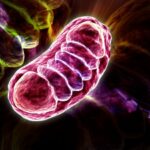 Cushing’s disease is the most common cause of endogenous hypercortisolemia. It is a rare disease of unknown etiology that is prone to relapse and damaging to quality of life, even in remission. A significant proportion of patients are not cured by primary surgical treatment, and adjuvant radiotherapy has become an increasingly unattractive proposition for clinicians who wish to spare their patients hypopituitarism and other potential complications. The few effective pharmacological options that are available currently tend to have dose-limiting side effects and new alternatives that are safer and more effective than the adrenal cortical enzyme inhibitors and adrenolytic drugs would be most welcome. This article discusses preliminary efficacy data for several potential new groups of drugs. The full article you can find here.
Cushing’s disease is the most common cause of endogenous hypercortisolemia. It is a rare disease of unknown etiology that is prone to relapse and damaging to quality of life, even in remission. A significant proportion of patients are not cured by primary surgical treatment, and adjuvant radiotherapy has become an increasingly unattractive proposition for clinicians who wish to spare their patients hypopituitarism and other potential complications. The few effective pharmacological options that are available currently tend to have dose-limiting side effects and new alternatives that are safer and more effective than the adrenal cortical enzyme inhibitors and adrenolytic drugs would be most welcome. This article discusses preliminary efficacy data for several potential new groups of drugs. The full article you can find here.
Featured posts
 Amelogenesis imperfecta (AI) is a hereditary developmental disorder affecting the enamel of teeth. Affected patients present with tooth hypersensitivity, rapid tooth wear, or fractures of enamel as well as alterations in color and shape, all of which compromise esthetic appearance and masticatory function. The aim of this study was to explore experiences and the impact on daily life of being a parent to a child with severe forms of amelogenesis imperfecta. Parents of children and adolescents with AI participated in an interview with a psychologist. The transcribed interviews were analyzed using thematic analysis. The parents talked about several concerns about having a child with AI. Four main themes emerged from the interviews: Feelings associated with passing on a hereditary disorder included the subtheme of guilt/shame; knowledge decreases stress included knowledge about diagnosis in the family and support from dental health care professionals; Unfamiliarity with diagnosis included missed diagnosis, fear of not getting correct treatment, and insufficient pain control; finally, the subtheme Psychosocial stress included fear of child being bullied and emergency dental visits. The full article you can find here.
Amelogenesis imperfecta (AI) is a hereditary developmental disorder affecting the enamel of teeth. Affected patients present with tooth hypersensitivity, rapid tooth wear, or fractures of enamel as well as alterations in color and shape, all of which compromise esthetic appearance and masticatory function. The aim of this study was to explore experiences and the impact on daily life of being a parent to a child with severe forms of amelogenesis imperfecta. Parents of children and adolescents with AI participated in an interview with a psychologist. The transcribed interviews were analyzed using thematic analysis. The parents talked about several concerns about having a child with AI. Four main themes emerged from the interviews: Feelings associated with passing on a hereditary disorder included the subtheme of guilt/shame; knowledge decreases stress included knowledge about diagnosis in the family and support from dental health care professionals; Unfamiliarity with diagnosis included missed diagnosis, fear of not getting correct treatment, and insufficient pain control; finally, the subtheme Psychosocial stress included fear of child being bullied and emergency dental visits. The full article you can find here.
Clinical effectiveness of enzyme replacement therapy with galsulfase in mucopolysaccharidosis type VI treatment
 Mucopolysaccharidosis VI is a rare disease characterized by the arylsulfatase B enzyme deficiency, which is responsible for different clinical manifestations. The treatment consists of enzyme replacement therapy with intravenous administration of galsulfase.
Mucopolysaccharidosis VI is a rare disease characterized by the arylsulfatase B enzyme deficiency, which is responsible for different clinical manifestations. The treatment consists of enzyme replacement therapy with intravenous administration of galsulfase.
The objective of this review article is to evaluate the effectiveness of the enzyme replacement therapy with galsulfase for the mucopolysaccharidosis VI treatment. For this matter a systematic review of observational studies is made and the databases of PubMed, Cochrane Library, Lilacs, and Journal of Inherited Metabolic Disease are reviewed. Eighteen studies fulfilled the inclusion criteria. A total of 362 participants with mucopolysaccharidosis type VI were evaluated, and 14 different outcomes related to the treatment effect were identified.
Regardless of the inherent limitations of observational studies, the outcomes indicate that the enzyme replacement therapy has a positive effect on most of the outcomes associated to the disease. The full article you can read here.
Conference about the European Reference Networks’ integrity into the national health system
 On 26th of March, 2019, the National Alliance of People with Rare Diseases, together with patient organizations, are organizing a conference, dedicated to European Reference Networks’ (ERN) integrity into the national health systems with the participation of EURORDIS in Sofia. ERN is really important for sharing an experience and good practices in the field of rare diseases.
On 26th of March, 2019, the National Alliance of People with Rare Diseases, together with patient organizations, are organizing a conference, dedicated to European Reference Networks’ (ERN) integrity into the national health systems with the participation of EURORDIS in Sofia. ERN is really important for sharing an experience and good practices in the field of rare diseases.
 For the Rare Disease Day 2019, in Plovdiv, the National Alliance of People with Rare Diseases and the Association of Hereditary Angioedema Patients, with the support of Plovdiv Municipality, The Professional School of Food Technology, trio “Persenk”, patient organizations’ representatives, members of their families and friends, will celebrate in front of the Plovdiv Municipality on 28th of February, 2019 (Thursday). At 13:00 sharp, as a sign of solidarity for the million affected by a rare disease people all over the world, the attendees will participate in the mass raising of hands which will be conducted simultaneously in whole Europe, and in the sky there will be released colorful balloons as a symbol of the thousands rare diseases.
For the Rare Disease Day 2019, in Plovdiv, the National Alliance of People with Rare Diseases and the Association of Hereditary Angioedema Patients, with the support of Plovdiv Municipality, The Professional School of Food Technology, trio “Persenk”, patient organizations’ representatives, members of their families and friends, will celebrate in front of the Plovdiv Municipality on 28th of February, 2019 (Thursday). At 13:00 sharp, as a sign of solidarity for the million affected by a rare disease people all over the world, the attendees will participate in the mass raising of hands which will be conducted simultaneously in whole Europe, and in the sky there will be released colorful balloons as a symbol of the thousands rare diseases.
Population Pharmacokinetics of Vamorolone (VBP15) in Healthy Men and Boys With Duchenne Muscular Dystrophy
 Duchenne muscular dystrophy (DMD) is an inherited neuromuscular disorder occurring in boys and caused by mutations in the dystrophin gene. Vamorolone is a first-generation delta-9,11 compound that has favorable efficacy and side effect profiles relative to classical glucocorticoids. The pharmacokinetics (PK) of oral vamorolone were assessed in parallel-group studies in healthy men (phase 1, n = 86) and boys with DMD (phase 2a, n = 48) during 14 days of once-daily dosing with a range of doses. Vamorolone exhibited moderate variability in PK, with the maximum plasma concentration usually occurring at 2-4 hours and a half-life of approximately 2 hours for all doses and days examined. Both men and boys showed a dose-linearity of PK parameters for the doses examined, with no accumulation of the drug during daily dosing. Ingestion with food resulted in markedly enhanced absorption of the drug, as tested in healthy men. Overall, vamorolone exhibited well-behaved linear PK, with similar profiles in healthy men and boys with DMD, moderate variability in PK parameters, and absorption and disposition profiles similar to those of classical glucocorticoids. The full article you can find here.
Duchenne muscular dystrophy (DMD) is an inherited neuromuscular disorder occurring in boys and caused by mutations in the dystrophin gene. Vamorolone is a first-generation delta-9,11 compound that has favorable efficacy and side effect profiles relative to classical glucocorticoids. The pharmacokinetics (PK) of oral vamorolone were assessed in parallel-group studies in healthy men (phase 1, n = 86) and boys with DMD (phase 2a, n = 48) during 14 days of once-daily dosing with a range of doses. Vamorolone exhibited moderate variability in PK, with the maximum plasma concentration usually occurring at 2-4 hours and a half-life of approximately 2 hours for all doses and days examined. Both men and boys showed a dose-linearity of PK parameters for the doses examined, with no accumulation of the drug during daily dosing. Ingestion with food resulted in markedly enhanced absorption of the drug, as tested in healthy men. Overall, vamorolone exhibited well-behaved linear PK, with similar profiles in healthy men and boys with DMD, moderate variability in PK parameters, and absorption and disposition profiles similar to those of classical glucocorticoids. The full article you can find here.
 Muscle pain may be part of many neuromuscular disorders including myopathies, peripheral neuropathies and lower motor neuron diseases. Although it has been reported also in mitochondrial diseases (MD), no extensive studies in this group of diseases have been performed so far. We reviewed clinical data from 1398 patients affected with mitochondrial diseases listed in the database of the “Nation-wide Italian Collaborative Network of Mitochondrial Diseases”, to assess muscle pain and its features. Muscle pain was present in 164 patients (11.7%). Muscle pain was more commonly detected in patients with mitochondrial DNA mutations (67.8%) than with nuclear DNA changes (32.2%). Interestingly, patients with nuclear DNA mutations tend to have a better therapeutic response than patients with mtDNA mutations. The full article you can find here.
Muscle pain may be part of many neuromuscular disorders including myopathies, peripheral neuropathies and lower motor neuron diseases. Although it has been reported also in mitochondrial diseases (MD), no extensive studies in this group of diseases have been performed so far. We reviewed clinical data from 1398 patients affected with mitochondrial diseases listed in the database of the “Nation-wide Italian Collaborative Network of Mitochondrial Diseases”, to assess muscle pain and its features. Muscle pain was present in 164 patients (11.7%). Muscle pain was more commonly detected in patients with mitochondrial DNA mutations (67.8%) than with nuclear DNA changes (32.2%). Interestingly, patients with nuclear DNA mutations tend to have a better therapeutic response than patients with mtDNA mutations. The full article you can find here.
 Mucopolysaccharidosis (MPS) are infrequent deposit diseases; generally, the diagnosis is delayed until symptoms appear. A substantial number of patients are misdiagnosed since they describe nonspecific initial symptoms and signs in common.
Mucopolysaccharidosis (MPS) are infrequent deposit diseases; generally, the diagnosis is delayed until symptoms appear. A substantial number of patients are misdiagnosed since they describe nonspecific initial symptoms and signs in common.
The aim of this study is to describe the common characteristics of patients with mucopolysaccharidosis already diagnosed, treated in hospitals of the Guanajuato Health System, with a special focus on early manifestations in order to review early clinical suspect manifestations. The study was carried out in the Pediatric departments of five big important hospitals of Bajio Mexico region in the period from February to August 2016. Eighteen patients were identified, 13 men and five women, with an average age of 8.6 years. The most frequent mucopolysaccharidosis was type IV A (Morquio) in seven patients, followed by type I (Hurler) in four patients, three patients for type III (San Filippo), two patients for type II (Hunter), and two patients for type VI (Maroteaux-Lamie). The commonest clinical manifestations at diagnosis were dimorphism, triangular dorsal hump, skeletal alterations, and a limited range of movement in the major joints. Non-skeletal manifestations, such as an umbilical/inguinal hernia and hepato-splenomegaly, were very frequent. In a majority of patients with mucopolysaccharidosis, the radiological data of the disease were found: they were most severe in type IV and type VI, mild in type I and II, and none in MPS III. The full article you can find here.
 Prader-Willi syndrome (PWS) is a complex neuroendocrine disorder affecting approximately 1/15,000-1/30,000 people. Unmet medical needs of individuals with PWS make it a rare disease that models the importance of multidisciplinary approaches to care with collaboration between academic centers, medical homes, industry, and parent organizations. Interviews with medical professionals, scientists, managed care experts, parents, and individuals with PWS were conducted from July 1 to December 1, 2016. Data are presented based on consensus from these interviews by specialty focusing on unique aspects of care, research, and management. Establishment of clinics motivates collaboration to provide evidence-based new standards of care, increases the knowledge base including through randomized controlled trials. They have a role in global telemedicine, including to rural areas with few resources, and create opportunities for clinical work to inform basic and translational research. The full article you can find here.
Prader-Willi syndrome (PWS) is a complex neuroendocrine disorder affecting approximately 1/15,000-1/30,000 people. Unmet medical needs of individuals with PWS make it a rare disease that models the importance of multidisciplinary approaches to care with collaboration between academic centers, medical homes, industry, and parent organizations. Interviews with medical professionals, scientists, managed care experts, parents, and individuals with PWS were conducted from July 1 to December 1, 2016. Data are presented based on consensus from these interviews by specialty focusing on unique aspects of care, research, and management. Establishment of clinics motivates collaboration to provide evidence-based new standards of care, increases the knowledge base including through randomized controlled trials. They have a role in global telemedicine, including to rural areas with few resources, and create opportunities for clinical work to inform basic and translational research. The full article you can find here.
 The “diagnostic odyssey” is well known and described in genetic counseling literature. Studies addressing the psychological, emotional, and financial costs of not having a diagnosis have shown how it permeates the lives of patients and families. The Undiagnosed Diseases Network aims to end this odyssey by providing diagnoses to individuals with undiagnosed conditions through multidisciplinary evaluations, whole exome and genome sequencing, and basic science research. Seven cases are presented that outline challenges that come from working with chronically undiagnosed and newly diagnosed. They illuminate the emotional journey of patients and families searching for a diagnosis and the mental health problems, financial distress, and chaos that can accompany not having answers. They also illustrate the surprising reactions patients and families can have to receiving a diagnosis. While the lessons learned from these families are not novel, new strategies are presented for handling these challenges in undiagnosed and ultra-rare populations, groups that will increase with the rise of clinical sequencing. The full article you can find here.
The “diagnostic odyssey” is well known and described in genetic counseling literature. Studies addressing the psychological, emotional, and financial costs of not having a diagnosis have shown how it permeates the lives of patients and families. The Undiagnosed Diseases Network aims to end this odyssey by providing diagnoses to individuals with undiagnosed conditions through multidisciplinary evaluations, whole exome and genome sequencing, and basic science research. Seven cases are presented that outline challenges that come from working with chronically undiagnosed and newly diagnosed. They illuminate the emotional journey of patients and families searching for a diagnosis and the mental health problems, financial distress, and chaos that can accompany not having answers. They also illustrate the surprising reactions patients and families can have to receiving a diagnosis. While the lessons learned from these families are not novel, new strategies are presented for handling these challenges in undiagnosed and ultra-rare populations, groups that will increase with the rise of clinical sequencing. The full article you can find here.
